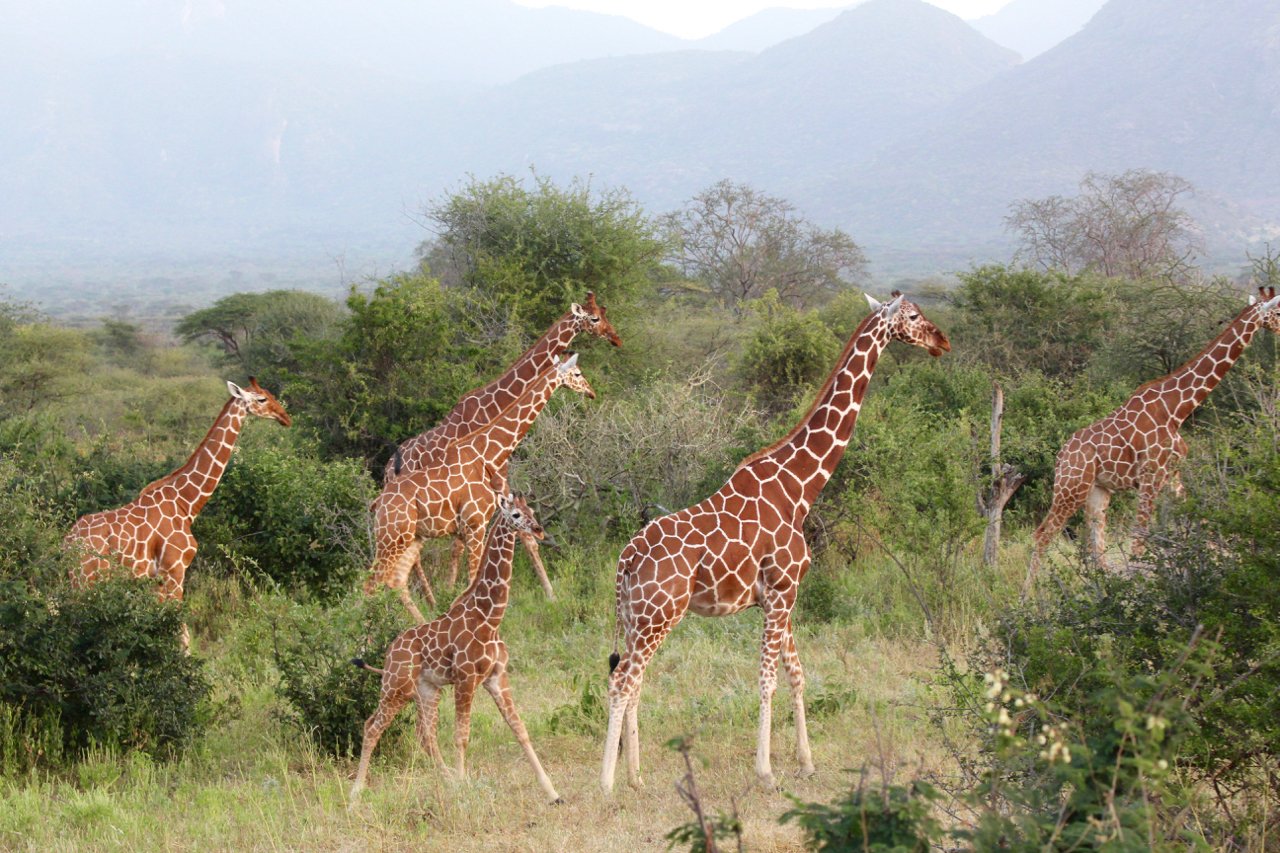 Image 1 of 1
Image 1 of 1


Sat - 5/7/22 - Yale Day of Service - Wild Watch Kenya
Giraffes are icons of Africa, but unfortunately these unique animals are in trouble. The giraffe population has declined by over 70% in the past 20 years—from 36,000 to less than 9,000 today. WildWatch Kenya wants to reverse that trend.
In 2016, they launched a collaborative conservation initiative to study reticulated giraffes by focusing on at two sites in northern Kenya: the 56,000-acre Loisaba Conservancy, and the 800,000-acre Namunyak Community Conservancy. There, a team of community-led conservation researchers are conducting field research to study these giraffes. They also monitor and keep records on individual animals, engage communities, and remove poaching snares from the habitat areas.
Part of the research includes a network of 100 motion-activated trail cameras, which automatically take photos of animals as they pass by. They also take photos that show side views of giraffes and run them through pattern-recognition software. This way, WildWatch Kenya can identify and track individual giraffes — since each individual has a unique coat pattern much like human fingerprints. By tracking particular giraffes, they can better understand where they go, what they do there, and how long they stay, which directs WildWatch Kenya's protection efforts.
WildWatch Kenya has tens of thousands of photos to sort through, and only a few researchers to view them. Our Yale Day of Service project is to help them review these trail camera photos, as well as to identify and count the animals in them. Your assistance will make a huge difference in the success of this project!
WildWatch Kenya will use the results to better understand giraffe ecology and to inform conservation efforts on the ground for giraffes and the other species that share their habitat.
If you would like to assist WildWatch Kenya with this effort PLEASE SIGN UP HERE
You can also find out more information about WildWatch Kenya here.
Giraffes are icons of Africa, but unfortunately these unique animals are in trouble. The giraffe population has declined by over 70% in the past 20 years—from 36,000 to less than 9,000 today. WildWatch Kenya wants to reverse that trend.
In 2016, they launched a collaborative conservation initiative to study reticulated giraffes by focusing on at two sites in northern Kenya: the 56,000-acre Loisaba Conservancy, and the 800,000-acre Namunyak Community Conservancy. There, a team of community-led conservation researchers are conducting field research to study these giraffes. They also monitor and keep records on individual animals, engage communities, and remove poaching snares from the habitat areas.
Part of the research includes a network of 100 motion-activated trail cameras, which automatically take photos of animals as they pass by. They also take photos that show side views of giraffes and run them through pattern-recognition software. This way, WildWatch Kenya can identify and track individual giraffes — since each individual has a unique coat pattern much like human fingerprints. By tracking particular giraffes, they can better understand where they go, what they do there, and how long they stay, which directs WildWatch Kenya's protection efforts.
WildWatch Kenya has tens of thousands of photos to sort through, and only a few researchers to view them. Our Yale Day of Service project is to help them review these trail camera photos, as well as to identify and count the animals in them. Your assistance will make a huge difference in the success of this project!
WildWatch Kenya will use the results to better understand giraffe ecology and to inform conservation efforts on the ground for giraffes and the other species that share their habitat.
If you would like to assist WildWatch Kenya with this effort PLEASE SIGN UP HERE
You can also find out more information about WildWatch Kenya here.
